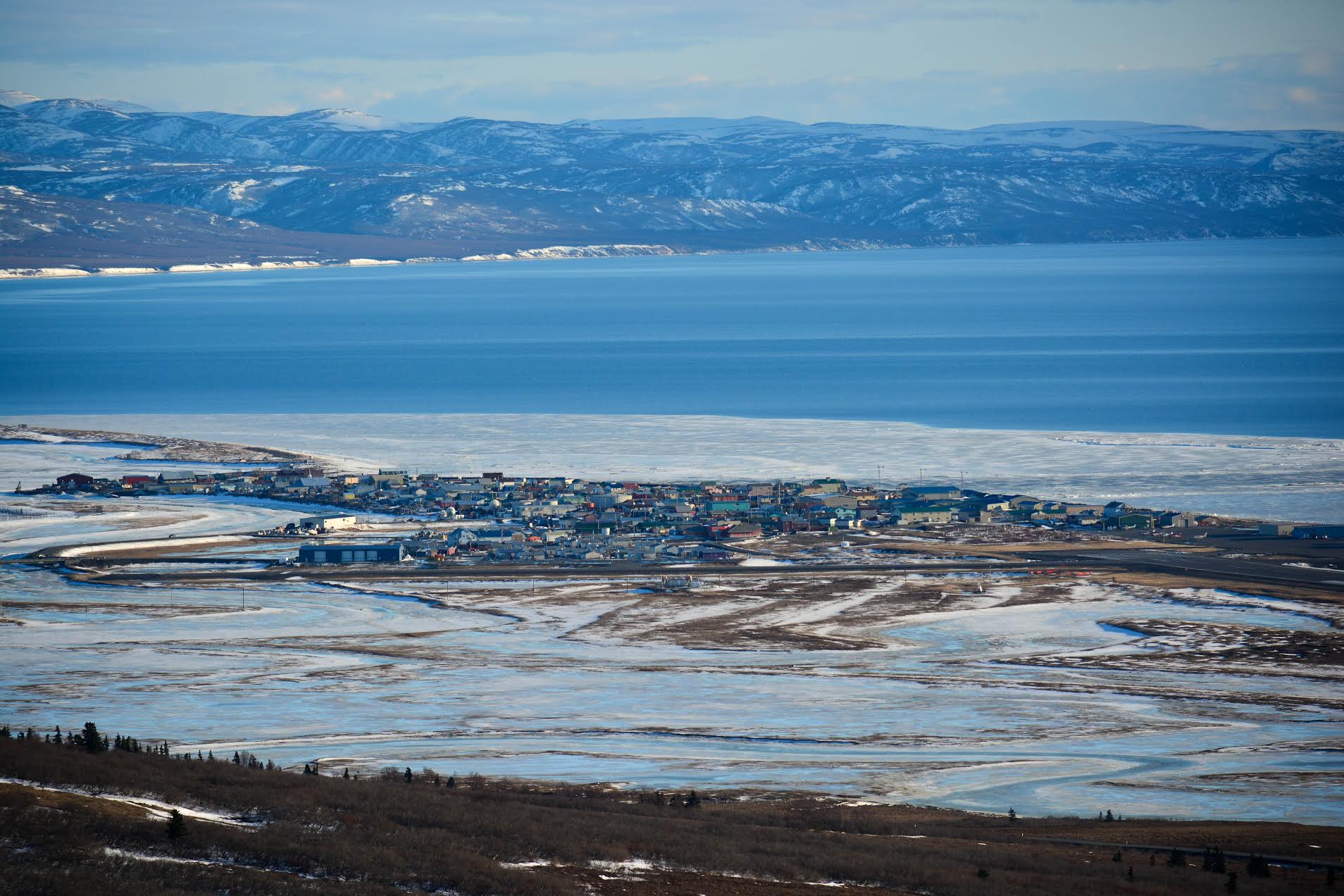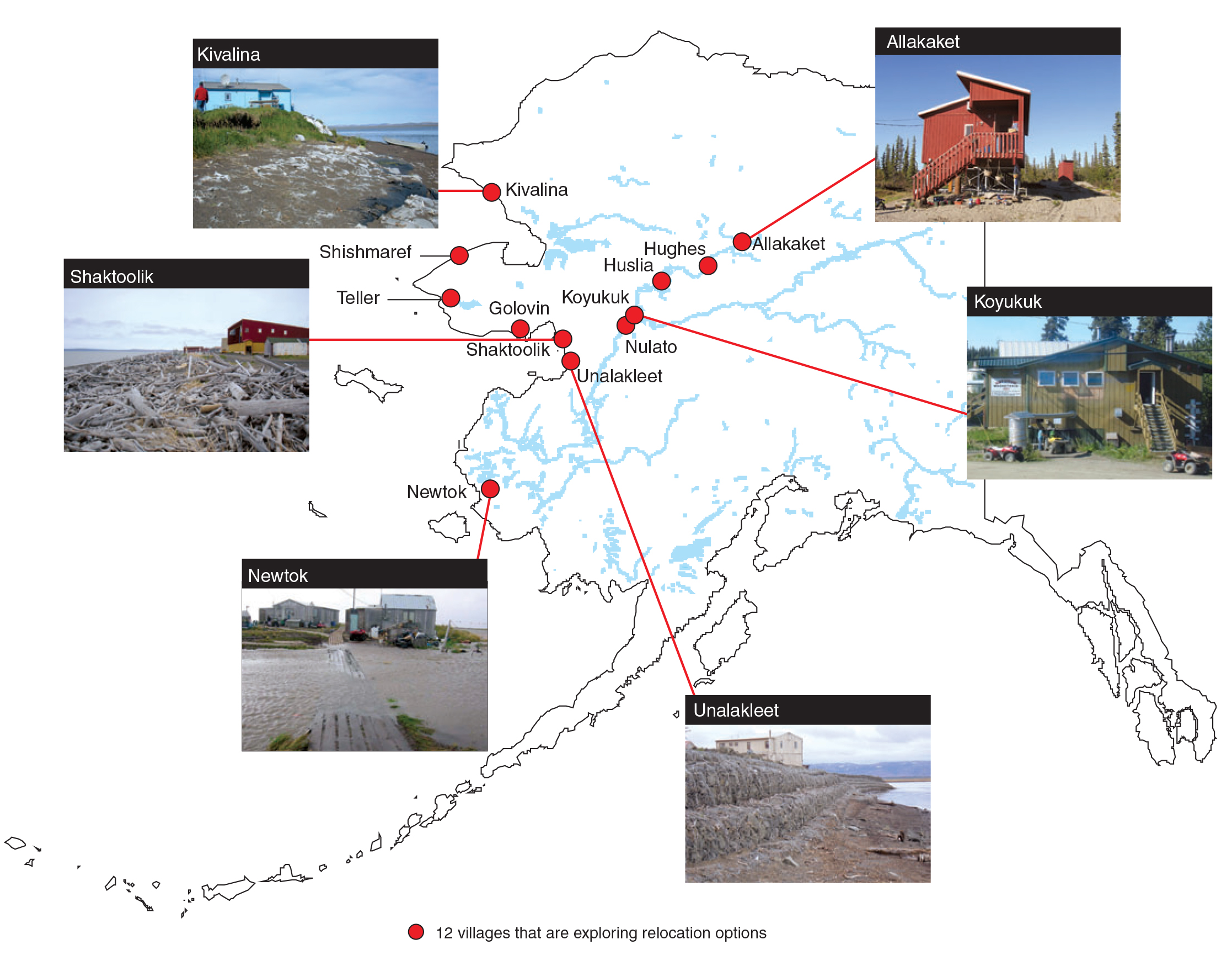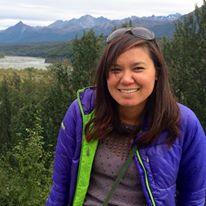
This photo of Unalakleet was taken in April, when water normally has been covered with ice and snow. Photo by Fisher Dill.
This is part two of a two-part series on how impact rapid climate change is affecting villages in Alaska. Read also “Climate Change Will Force Villages to Relocate.”
UNALAKLEET, AK (August 31, 2016) – Rapid climate change is forcing residents of Alaskan coastal villages to move and alter their food sources—but they are determined to adapt, just as they have in the past.
The villages of Shaktoolik, Golovin, and Unalakleet, where the Covenant has congregations, have been identified as among the most imperiled by climate change.
As ice on the Bering Sea thins and water levels rise, erosion is eating away the ground directly out from under some homes. Devastating storms that occurred rarely in the past hundred years have struck several times the past decade.
Warming temperatures also have led to changing migration patterns of major food sources such as caribou. Hunting for seal and whales has become more dangerous. Land once blanketed by snow is now often bare, making travel and hunting nearly impossible at times. Melting permafrost has damaged infrastructure such as roads and sewers.
Average annual air temperatures have risen three degrees over the past 60 years—twice as fast as the global average. Scientists predict that average annual temperatures will climb another two to four degrees by 2050.
In response, residents have begun to relocate their entire communities. “The leaders in our community realize that climate change is affecting our community and are encouraging people to build up on the hillside,” says Unalakleet resident Laureli Ivanoff, who is constructing her home there. In 2009, Unalakleet held a land sale to free up property in the hills several miles away. “In 30 or 50 years, that is where our town will be,” Ivanoff adds.

Source: U.S. General Accounting Office
The village of Shaktoolik has moved before. It was originally located six miles up the Shaktoolik River. In 1933 it moved to the mouth of the river, according to the village website. But the new site was prone to severe storms, so the village moved to its current location in 1975.
This time, they are moving to higher ground, as is Golovin. Like Unalakleet, people from both communities have begun to build there, and new infrastructure is being put in place. In Golovin, the tribal council office, community and the new water treatment facility are all being constructed out of the floodplain.
Despite the dramatic changes, Ivanoff and other locals take issue with the way media has portrayed their situation. “It is not all doom and gloom,” she says. “We’re not in a place where we’re hopeless. Our hope and our intention is to know that changes are happening very quickly and that we would have the foresight to start adapting.”
She notes, “We are now harvesting more moose than ever before. Moose has become a very important food source for us now. My brother now is harvesting black bear. We never used to do that at all, but it’s nutritious and tastes great.”
It is not all doom and gloom, We’re not in a place where we’re hopeless. Our hope and our intention is to know that changes are happening very quickly and that we would have the foresight to start adapting. – Laureli Ivanoff
They aren’t bitter about those changes, she says. “It’s a blessing to go and harvest a moose.”
That perspective is one reason she moved back to Unalakleet. Ivanoff had moved away from the community nearly 20 years ago when she went to college. Now she wants her teenagers to be connected with the land and the culture.
Lynda Bekoalok grew up in Kansas and moved to Shaktoolik 14 years ago to teach school. She takes issue with the suggestion that Alaskans move away from the region. “Why do people live in Kansas when there are so many tornadoes? Why do people live in California even though there are earthquakes? Because it’s home.”
“We’re a resilient people, and we will work hard to keep our subsistence lifestyles through the changing environment,” says Victoria Kotongan, an environmental specialist who lives in Unalakleet.
Villagers even note some side benefits of climate change. “We didn’t hit 70 below last winter, and I didn’t mind that,” says Bekoalok. Others said longer periods of warmer temperatures will allow more time to harvest new food sources.
Yet many residents grieve their losses even as they try to come to grips with the changes. In a column published in the Alaskan Daily News for which she frequently writes, Ivanoff voiced a plea to snow for its return: “The issues leading to you going elsewhere are much bigger than anything I can address alone. I have accepted you had to leave and will let you do what you need to do right now. But you need to know that you are missed. You are wanted. You are loved. I want you back.”
Categories:
News

Comments